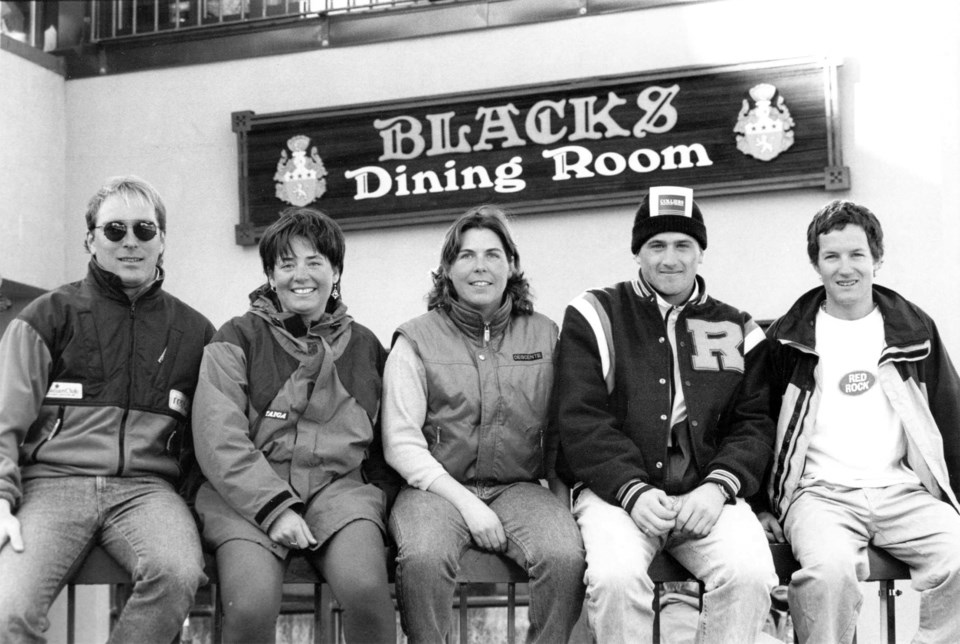April is the last month for our temporary exhibit, Off the Lip: The Rise of Snowboarding in Whistler. If you haven’t had a chance to see it, make sure you stop by before it closes to allow for the installation of another new exhibit. Although Off the Lip is the first exhibit dedicated to snowboarding in our current facility, the museum’s first snowboard display took place in April 1996, and was developed to coincide with the very first World Ski and Snowboard Festival (WSSF).
According to festival director Doug Perry, WSSF organizers had two goals when they began planning: to increase activity in the resort at a traditionally quiet time of year, and to attract as much media attention as possible. To this end, they planned 22 events over 10 days with 1,500 athletes participating.
The 1996 festival brought together established events that already took place in the spring, such as the Couloir Ski Race Extreme, the Whistler Cup, and the WestBeach Classic, and added more events both on the mountain and throughout Whistler Village. These included family events, arts and culture programming such as the snowboard exhibit at the Whistler Museum, industry displays and demos, more ski and snowboard competitions, and performances by nearly a dozen bands in various venues over three days with Vancouver’s 54-40 closing out the festival. By the end of the 10 days, Perry had heard the festival described as “the single most important happening in the ski and snowboard industry,” and organizers were already looking ahead, promising an even bigger and better festival next year.
WSSF returned in 1997 from April 4 to 13, including many of the same events. Additional events were planned as well, including two bike races meant to take place on the mountains. The Grinders Cup Dual Eliminator Mountain Bike Snow Race was scheduled to run on Blackcomb Mountain under the Magic Chair, but was cancelled due to lack of interest from competitors. The Norco Challenge did go ahead, and featured Norco factory riders trying to gain as
much speed as possible down Whistler Mountain’s Saddle.
Some of the snow events also raised money for various causes, such as the Backbone Enduro Vertical Challenge coordinated by Chris Kent. Teams and individuals competed to see who could finish the most runs over an eight-hour period while uploading only the Creekside Gondola and the Red Chair. Competitors collected sponsorships, and the money raised went to a rehabilitative medical research centre proposed by BC Rehab and to the GF Strong Rehabilitation Centre.
Other organizations also got involved in the festival through partnerships and by creating their own tie-in events, increasing the number of arts and culture events at WSSF. The Whistler Resort Association (WRA) offered a new “Stay for Free” promotion where buying three days of dual-mountain skiing got you two nights in a hotel for free. Heaven, advertised as a “full-on, all-night interactive rave,” planned to turn the Whistler Conference Centre ballroom into a dance club with DJs from Toronto and Los Angeles. Twenty-three bands were scheduled to play throughout the festival and, for the first time, film was introduced as a component with the Moving Pictures film festival featuring “some of the hottest and most controversial Canadian films from the past year.”
According to statistics gathered just after WSSF finished, the 1997 festival was a great success for the resort. More than 2,000 athletes came out that year to participate in the various events, and the audiences for most events also increased, with more than 8,000 spectators gathering at the base of Whistler Mountain to watch the WestBeach Invitational Big Air competition. Both Whistler and Blackcomb Mountains reported their highest single-day skier numbers for the month of April on April 5, and the WRA reported bookings exceeding the 1996 WSSF by about 80 per cent (and facilitated an increase in package bookings of 200 per cent). Though not all businesses reported their numbers, the Longhorn and McDonald’s both reported record sales days during the WSSF.
WSSF will be back again this year from April 8 to 14 and, though it has changed in many ways since it first began in 1996, will still include some familiar aspects.




